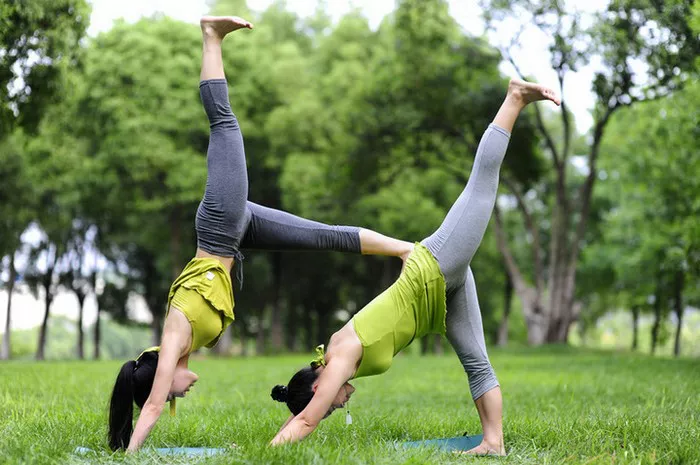Power yoga, a dynamic and vigorous form of yoga, has gained immense popularity in recent years for its ability to challenge the body and mind, promoting strength, flexibility, and mental focus. As individuals seek ways to enhance their physical fitness and overall well-being, the allure of power yoga continues to grow. In this comprehensive article, we delve into the meaning of power yoga, its origins, principles, benefits, and how it differs from traditional yoga practices.
Origins and Evolution
Power yoga emerged in the late 20th century as a Westernized adaptation of traditional yoga practices. Influenced by the teachings of renowned yoga masters such as B.K.S. Iyengar and K. Pattabhi Jois, power yoga was developed to cater to the needs of modern practitioners seeking a more physically demanding and dynamic form of yoga.
Although power yoga shares roots with Ashtanga yoga, it deviates from the structured sequence of poses typically associated with its predecessor. Instead, power yoga emphasizes fluidity and freedom of movement, allowing instructors to tailor sequences to suit the needs and preferences of their students.
Defining Power Yoga
At its core, power yoga is characterized by a series of dynamic, flowing sequences that synchronize breath with movement. Unlike traditional hatha yoga, which may focus on holding poses for extended periods, power yoga encourages practitioners to move swiftly from one pose to the next, creating a continuous and challenging workout.
One of the defining features of power yoga is its emphasis on strength and endurance. Through a combination of dynamic poses, core-strengthening exercises, and balance challenges, power yoga helps practitioners build muscle, increase stamina, and improve overall physical fitness.
Key Principles
While power yoga offers a degree of flexibility in its sequencing and structure, several key principles underpin its practice:
1. Breath Awareness: Central to the practice of power yoga is the synchronization of breath with movement. Practitioners are encouraged to cultivate a steady and controlled breath, using it to enhance the flow of energy throughout the body and promote relaxation and focus.
2. Strength and Stability: Power yoga challenges the body’s strength and stability through a series of dynamic poses that target major muscle groups. By engaging muscles in both strength and endurance exercises, practitioners develop greater physical resilience and functional strength.
3. Mindfulness and Presence: Like other forms of yoga, power yoga encourages practitioners to cultivate mindfulness and present-moment awareness. By focusing the mind on the sensations of the body and the rhythm of the breath, practitioners develop a deeper connection to their practice and a heightened sense of self-awareness.
4. Adaptability and Variation: Unlike more rigid forms of yoga, power yoga offers flexibility in its sequencing and structure. This adaptability allows instructors to tailor classes to meet the needs and abilities of students, making it accessible to practitioners of all levels.
Benefits of Power Yoga
The practice of power yoga offers a wide range of physical, mental, and emotional benefits:
1. Improved Strength and Flexibility: Through a combination of dynamic poses and strength-building exercises, power yoga helps increase muscle strength, enhance flexibility, and improve overall body composition.
2. Enhanced Cardiovascular Health: The vigorous nature of power yoga elevates the heart rate, promoting cardiovascular fitness and endurance. Regular practice can help lower blood pressure, reduce the risk of heart disease, and improve circulation.
3. Stress Reduction: Power yoga provides an opportunity to release tension and stress stored in the body through physical movement and breath awareness. By engaging in a mindful practice, practitioners can cultivate a sense of calm and relaxation, reducing the impact of stress on both the body and mind.
4. Improved Focus and Mental Clarity: The concentration required to maintain proper alignment and breath control in power yoga cultivates mental focus and clarity. Practitioners often report feeling more alert, centered, and present after a yoga session.
5. Increased Energy and Vitality: Regular practice of power yoga can boost energy levels and enhance overall vitality. By stimulating the body’s energy systems and promoting efficient circulation, power yoga leaves practitioners feeling invigorated and rejuvenated.
6. Weight Management: The dynamic nature of power yoga, coupled with its calorie-burning potential, makes it an effective tool for weight management and body composition optimization. Regular practice can help individuals achieve and maintain a healthy weight while promoting lean muscle mass.
Differences from Traditional Yoga Practices
While power yoga shares commonalities with traditional yoga practices, several key differences set it apart:
1. Intensity: Power yoga is often more intense and physically demanding than traditional forms of yoga, emphasizing strength, endurance, and cardiovascular fitness.
2. Fluidity of Movement: Unlike the structured sequences of poses found in traditional yoga styles, power yoga encourages fluidity of movement, allowing practitioners to flow from one pose to the next with ease.
3. Emphasis on Strength: While traditional yoga practices may focus on flexibility and relaxation, power yoga places a greater emphasis on building strength and stability through dynamic poses and strength-training exercises.
4. Breathwork: While both traditional and power yoga emphasize the importance of breath awareness, power yoga typically incorporates more vigorous and dynamic breathwork techniques to support the intensity of the practice.
Conclusion
Power yoga offers a dynamic and challenging approach to yoga practice, emphasizing strength, flexibility, and mental focus. With its roots in traditional yoga teachings and its adaptation to suit the needs of modern practitioners, power yoga has become a popular choice for individuals seeking a comprehensive workout that nurtures both body and mind.
By embracing the principles of breath awareness, strength and stability, mindfulness, and adaptability, practitioners of power yoga can reap a multitude of physical, mental, and emotional benefits. Whether you’re looking to enhance your physical fitness, reduce stress, or cultivate a deeper sense of self-awareness, power yoga provides a transformative journey toward holistic well-being.

















